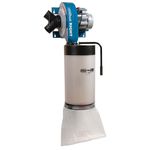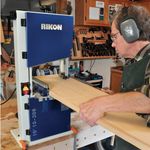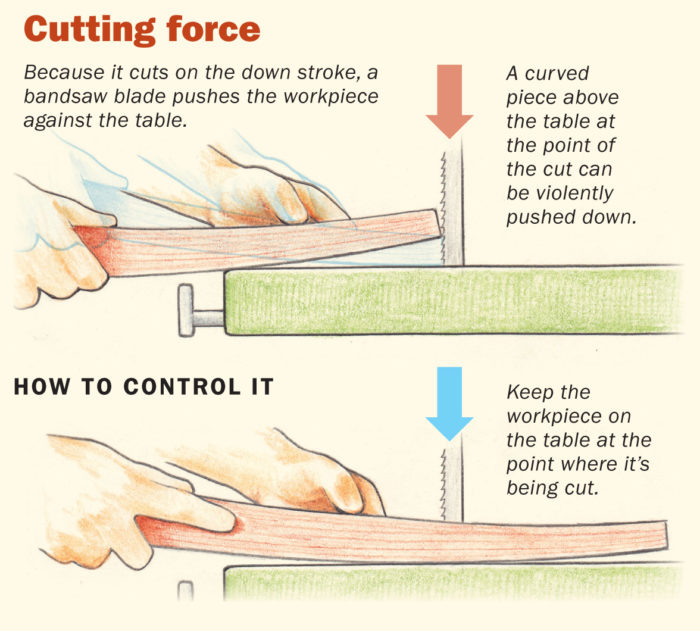The Safest Way to Cut Curved Pieces on the Bandsaw
Exploit the bandsaw blade’s downward motion to improve your control when cutting curved parts.

The bandsaw is a tremendously versatile tool that can be used to rip lumber, resaw a thick board into two or more thin ones, and cut joinery. It performs all these tasks extremely well, but they are secondary its ability to cut curves. Cut an arc on the bottom edge of a table apron? No problem. Turn a square blank in to a circle? Done. It can even be used to cut a furniture part that’s already curved, like tapering the thickness of a table leg that’s convex on the front and concave on the back.
However, because a bandsaw cuts downward, the blade pushes/pulls the workpiece onto the table. This is no problem, and actually beneficial when the part is flat, like a table apron, but it can be quite dangerous when the part is curved. If the part is off the table where it’s being cut, the blade will most likely violently push down the part. To cut a curved part safely, here’s what you must do: Exploit the blade’s motion to improve your control over the part. The blade forces the part onto the table, so if you keep the part’s point of contact with the table right in front of the blade, the blade’s downward rotation will help keep the part on the table and stable. The part can be off the table before and after the cut, just not where it is being cut.
For more on power tool safety, check out Todd’s upcoming article in the 2017-2018 Tools & Shops issue.
More on FineWoodworking.com
- Better Push Stick for Ripping on the Bandsaw
- Tenons on the Bandsaw
- Shop Talk Live 133: On Bandsaw Blades and Waterstones
Fine Woodworking Recommended Products

Rockler Dust Right 1250 CFM

Rockler Dust Right 650 CFM

Rikon 10-3061 10-in. Deluxe Bandsaw
The saw has two speeds: 3,280 sfpm (surface feet per minute) for wood and 1,515 sfpm for soft metals and some plastics.









Log in or create an account to post a comment.
Sign up Log in